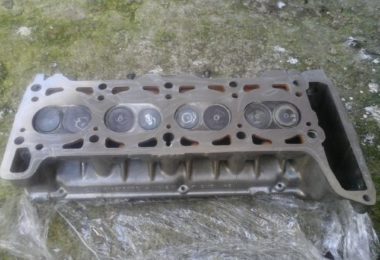Grand Touring Concepts is excited to share the experience and knowledge of fellow Lada enthusiast Nagy Emil! Please read on as he covers the principles of Lada Engine compression ratios and answers some common questions about the topic. Follow along with the 2nd part of the article!
(Part 1 of this article can be found here: TAKE ME TO PART 1)
By Nagy Emil
How can I raise the compression ratio in my own Lada engine?
Before making the decision to raise the CR, you should consider the purpose of the engine, pre-select a configuration like choosing a cam, and calculating the CR etc., before doing anything else. If steps to increase CR are done carelessly, such as over-milling, you can easily ruin the engine block, or cylinder head, and trash them.
Also, if you plan to use the standard camshaft, consider that it is useless to raise CR over 9.5:1, because the standard cam has such a little amount of lift, very few degrees of duration, and small valve overlap. After a point the engine simply might not work properly.
You should also consider that depending on the amount you will raise the CR, you will have to alter your ignition timing (sometimes completely change the whole system with a programmable one), use higher octane fuel, use a reinforced, metallic cylinder head gasket, upgrade the cooling system, alter the fueling system (use richer mixture to prevent detonations), and upgrade the starter motor to a geared one.
The practical solutions and typical methods to increase the CR:
Skimming (Milling) the Cylinder Head: This is the easy procedure; any machine shop that rebuilds heads can do it. However, with some of them you must argue, because they will tell you that you’ll ruin your engine if you skim the head, for about 1.5 mm you can see in the photo below that even the edges of the ignition firing order numbers are skimmed. If you need to skim more than 1 mm from the head, the shop will mill down the big part with the fly cutter, because the grinding stones will get contaminated, and give a finishing touch with the stone.

Notice even the edges of the ignition firing order numbers are partly skimmed.
Skimming (Milling) the Engine Block ( only on 2103/2106/2121 type engines) – similar to the cylinder head skimming, but in this case, you deck the block until the pistons are running on level deck or slightly above at Top Dead Piston.

This block has been skimmed for increased compression ratio and is ready to have a cylinder head installed
Installing a Stroker crankshaft – Any crankshaft that has a stroke longer than 80 mm, will cause an increase in the CR, because of the higher travel of the piston/volume. The usual cranks that can be easily installed are the 82 mm and 84 mm stroke.
The 84 mm stoker crank is OEM installed in the Lada Niva 2103 (1.8L, 84 hp in original configuration). In Hungary, it is common to install the 2103 crankshaft to small blocks (2101/2101-1), and use Fiat connecting rods, or modify the existing ones by compressing them about 7 mm.
Using Special Forged Pistons, designed to raise the CR. These products can be found on some Hungarian tuning parts store (like llracing.hu ), and are also available for purchase directly from their manufacturer, ROSS PISTONS USA.

ROSS Racing Pistons USA
The pistons are designed by Dr. Havassy Peter, from Havassy Motorsport, the biggest Hungarian Lada tuner/parts manufacturer. On some designs, the dome volume is 6.7 cc and they have valve reliefs, which is a big advantage for hot cams, because under a specific lift, you don’t need to machine them. This could be the least invasive method of increasing compression ratio, by simply installing dedicated high-compression pistons, the engine block and cylinder head could remain un-milled, but could generate the biggest costs.
In Part 3, Emil will take you through the how to calculate Compression Ratio, and some tricks keep your high-compression Lada Engine from failing.
